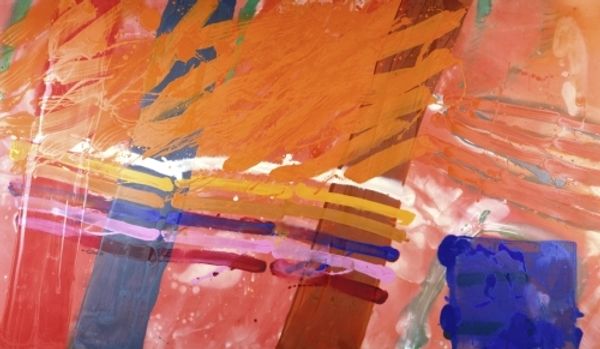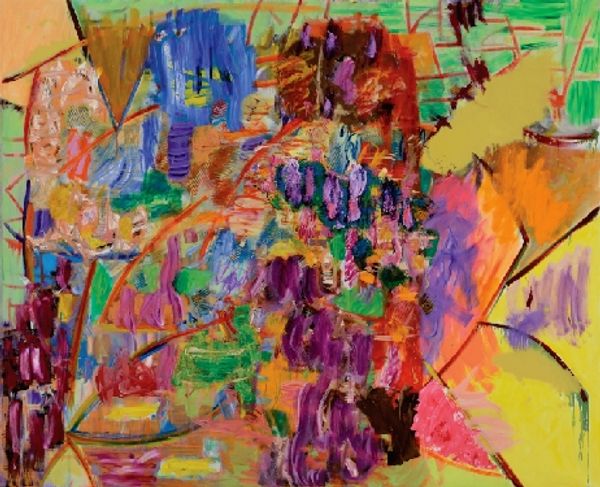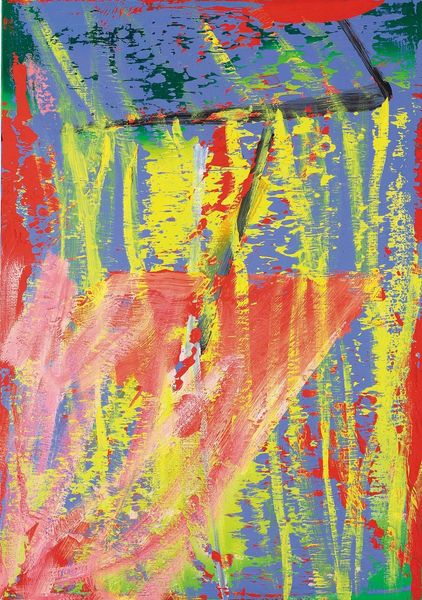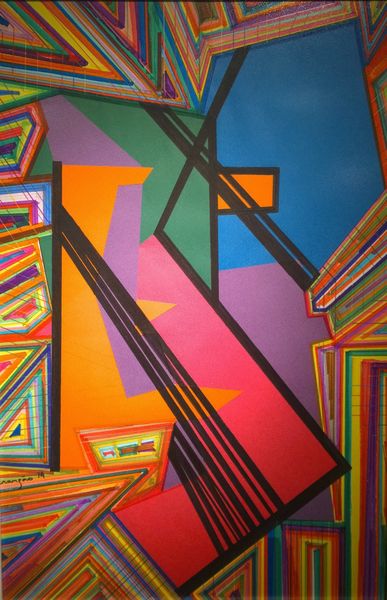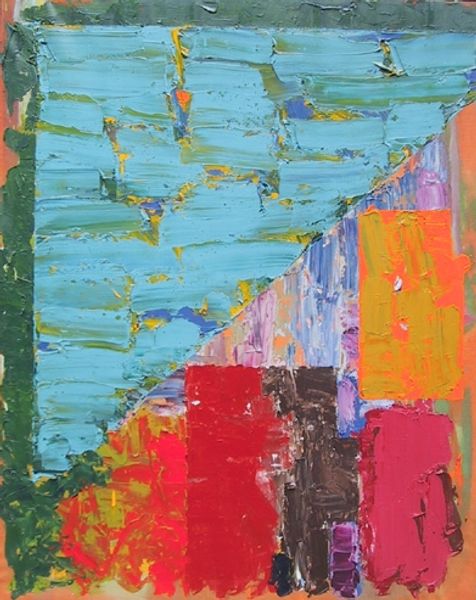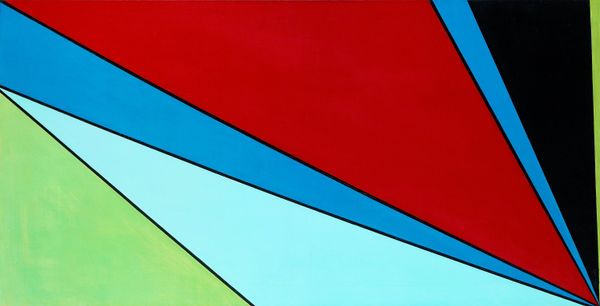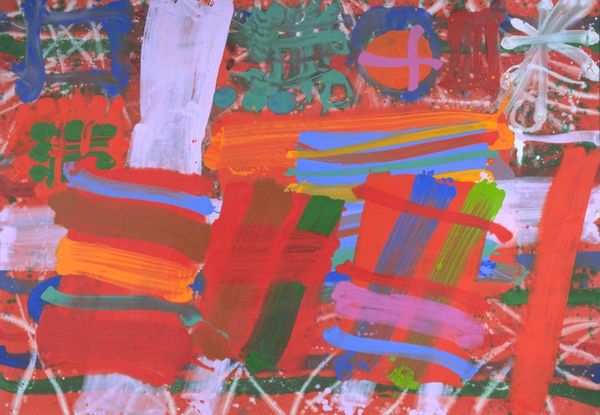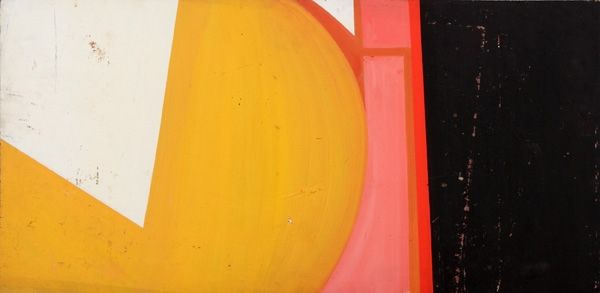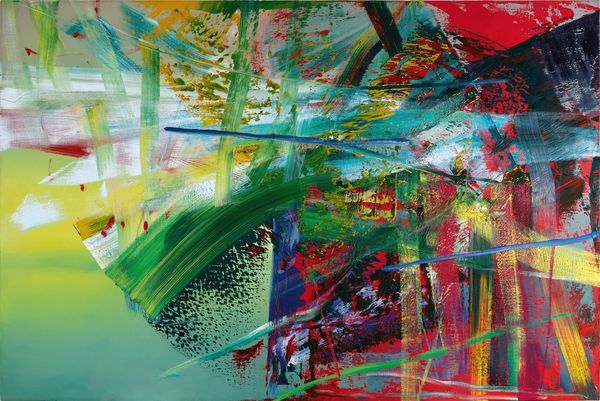
Dimensions: 119 x 224 cm
Copyright: Jeremy Henderson,Fair Use
Curator: Looking at this vibrant canvas, we have before us "Semper Idem, Tandava Stasis" by Jeremy Henderson, completed in 1979. It’s rendered with acrylic paint, a medium that lends itself to the kind of bold expression we see here. Editor: My first impression? It's riotous! A joyful, almost aggressive collision of shapes and colours. The scale of these geometric forms is really striking. It feels incredibly dynamic, full of movement, like the artist was capturing some kind of raw energy. Curator: The title certainly suggests a sense of perpetual motion and a moment of pause. "Semper Idem" translates to "always the same," while "Tandava" alludes to the divine dance of Shiva in Hindu cosmology, often interpreted as a source of creation, preservation, and destruction. Thinking about those themes together – permanence, constant motion, even annihilation – complicates my reading. It speaks to me of a particular moment when identity felt threatened, always becoming, never being. Editor: I can definitely see that interplay. From a formal perspective, there's a real tension between the chaotic composition and the clarity of the individual forms. Note the deep blues anchored by the fiery reds and greens. The way the acrylic is applied, almost aggressively in places, contributes to that feeling of restless energy. Semiotically, we could even read the gestures as signs—the splatters, drips, and layered shapes forming a distinct language. Curator: Yes, and considering that the painting was made in 1979, against a backdrop of social and political upheaval, and bearing in mind the rise of movements centered on self-definition and struggles against systemic oppression, do you see resonances of that in the chaotic composition you point to? Could this be an attempt to map complex socio-political forces onto the canvas? Editor: That’s an interesting question. Certainly, we see this explosion of expression reflected in other neo-expressionist works from that period. Perhaps Henderson’s choice of non-figurative forms points to the inadequacy of language and representation to fully capture the realities of that era. It becomes more about the raw feeling. Curator: It pushes beyond simple representation towards something more felt than seen. It's a visceral experience, really. I leave contemplating these themes of permanence and transience, revolution and stasis and the identity implications of navigating those contradictions. Editor: Indeed. It is precisely that tension that leaves one to contemplate this energetic, layered, restless composition and walk away enriched, challenged, and invigorated.
Comments
No comments
Be the first to comment and join the conversation on the ultimate creative platform.
